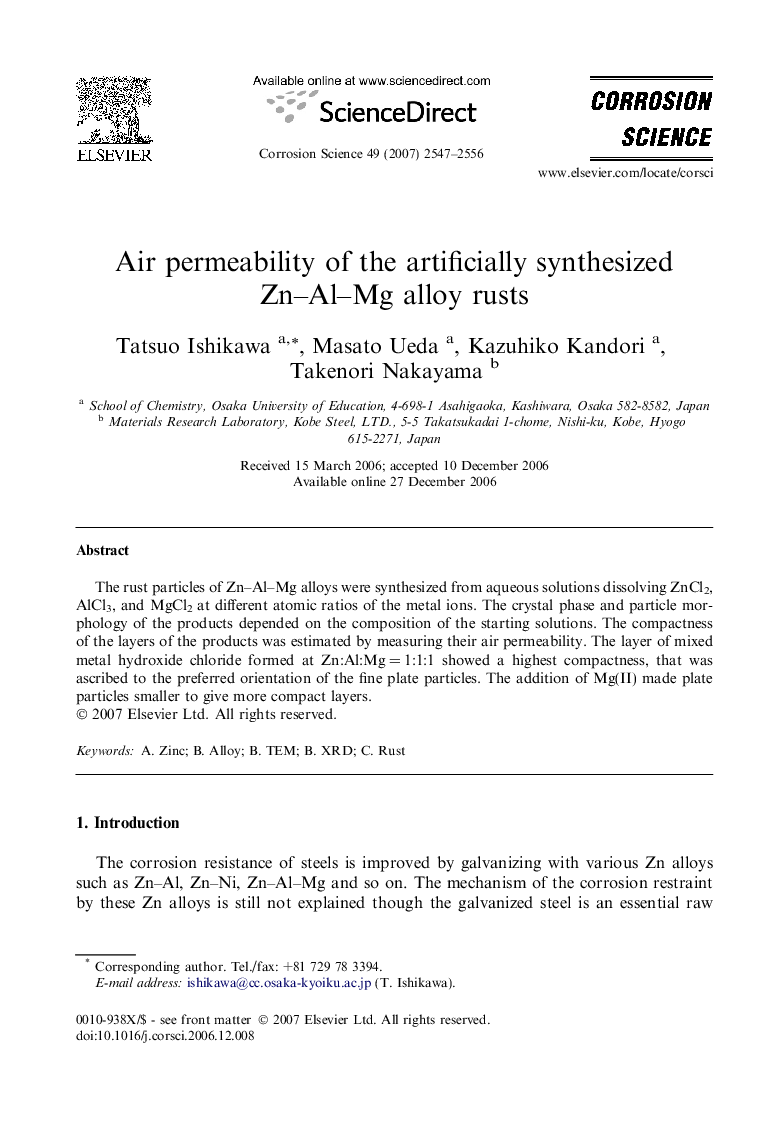| Article ID | Journal | Published Year | Pages | File Type |
|---|---|---|---|---|
| 1472057 | Corrosion Science | 2007 | 10 Pages |
Abstract
The rust particles of Zn–Al–Mg alloys were synthesized from aqueous solutions dissolving ZnCl2, AlCl3, and MgCl2 at different atomic ratios of the metal ions. The crystal phase and particle morphology of the products depended on the composition of the starting solutions. The compactness of the layers of the products was estimated by measuring their air permeability. The layer of mixed metal hydroxide chloride formed at Zn:Al:Mg = 1:1:1 showed a highest compactness, that was ascribed to the preferred orientation of the fine plate particles. The addition of Mg(II) made plate particles smaller to give more compact layers.
Related Topics
Physical Sciences and Engineering
Materials Science
Ceramics and Composites
Authors
Tatsuo Ishikawa, Masato Ueda, Kazuhiko Kandori, Takenori Nakayama,
